

Move Over Product Design, UX Is The Future. For decades, the most successful businesses thrived on product innovation as the natural strategy to increase revenues, market share, and loyalty.
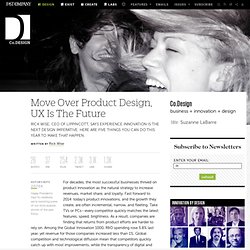
Fast forward to 2014: today’s product innovations, and the growth they create, are often incremental, narrow, and fleeting. Take TVs or PCs--every competitor quickly matches the latest features, speed, brightness. As a result, companies are finding that returns from product efforts are harder to rely on. Among the Global Innovation 1000, R&D spending rose 5.8% last year, yet revenue for those companies increased less than 1%. Global competition and technological diffusion mean that competitors quickly catch up with most improvements, while the transparency of digital and social media also prompts consumers to quickly switch allegiance with each new alluring offer.
As A City Remakes Itself, Putting Forward A Quietly Radical Plan. World-Class Buildings For The Underserved, At Under $10k. There are dozens of annual awards doled out to architects who build beautiful, expensive work.
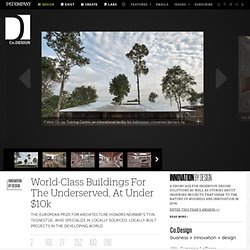
The European Prize for Architecture provides a much-needed counterpoint in the industry, rewarding architects who make “significant contributions to humanity" above all else. A 40-Minute Crash Course In Design Thinking. 4 Lessons In Creativity From John Cleese. There’s a certain generation (or two) that owes its twisted, awkward, scorchingly black sense humor to John Cleese.
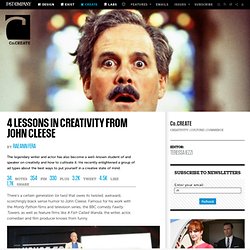
Famous for his work with the Monty Python films and television series, the BBC comedy Fawlty Towers, as well as feature films like A Fish Called Wanda, the writer, actor, comedian and film producer knows from funny. The Surprisingly Smart Strategy Behind London’s Infamous Olympic Branding. Say what you will about London’s Olympic logo--and many people have said, and are still saying, many, many things--it is nothing if not memorable.
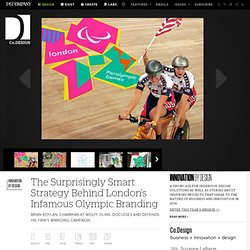
International branding consultancy Wolff Olins was no stranger to Olympic identities, having created the mark for the 2004 games in Athens. Far-Fetched Ideas Are Fun. But Innovation Usually Starts Small. A few weeks ago, The New York Times Magazine gave us “32 Innovations That Will Change Your Tomorrow.”

Great Brands Are About Fusing Product And Service. How Do You Do It? For the past 40 years, futurists, economists, and media mavens have debated which business strategies are best suited for the networked, postindustrial era.
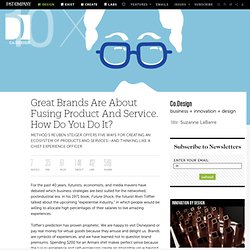
In his 1971 book, Future Shock, the futurist Alvin Toffler talked about the upcoming “experiential industry,” in which people would be willing to allocate high percentages of their salaries to live amazing experiences. Toffler’s prediction has proven prophetic. We are happy to visit Disneyland or pay real money for virtual goods because they amuse and delight us. Brands are symbols of experiences, and we have learned not to question brand premiums. Spending $200 for an Armani shirt makes perfect sense because the luxury experience and self-expression create an intangible value beyond the mere cloth. Apple has been held up as the definitive example of how to integrate a brand and its products and services to create an extraordinary company. The iPhone is a product that delivers services and fulfills the promise of the Apple brand. Nike Twitter Campaign Banned in UK for Lack of Transparency.
Should athletes and entertainers be able to tweet endorsements for the brands that sponsor them without clearly labeling those posts as advertisements?
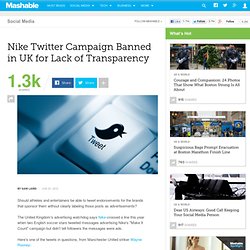
The United Kingdom's advertising watchdog says Nike crossed a line this year when two English soccer stars tweeted messages advertising Nike's "Make It Count" campaign but didn't tell followers the messages were ads. Here's one of the tweets in questions, from Manchester United striker Wayne Rooney: Arsenal midfielder Jack Wilshire posted a similar tweet that also used the #makeitcount hashtag and directed followers back to the Nike site.
The UK's Advertising Standards Authority (ASA) received a complaint from an unnamed source that it was not clear enough that Rooney and Wilshire's tweets were advertisements, according to a Guardian report. How Green Garage Built A Brand Around Reshaping the Auto Care Industry. At 1 a.m. on February 10, 2009, Ryan Ferrero jolted awake to an idea he’d had in the back of his head for six months.

An "a-ha moment" far too good to keep to himself, he phoned David Moll, CEO of Boulder-based investment firm Infield Capital, and the two later took to a white board to begin mapping out the framework for Green Garage, an eco-conscious, full-service auto-care center bent on filling what Ferrero believed to be a gaping hole in the category and changing how consumers approached car care and fuel efficiency. Branding Talk Isn't Helping Your Company. Here's What Should Replace It. Last week, WPP brought out its league table of the world’s most valuable brands.
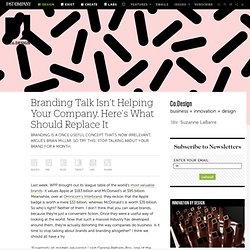
It values Apple at $183 billion and McDonald’s at $95 billion. The Next Wave Of VC Strategy: Bringing Branding Into The Earliest Phases. As readers of Co.Design know well, branding is an essential component of an organization’s success.
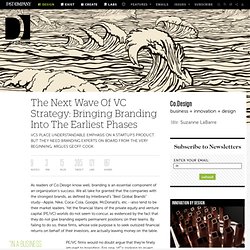
We all take for granted that the companies with the strongest brands, as defined by Interbrand’s "Best Global Brands" study--Apple, Nike, Coca-Cola, Google, McDonald’s, etc. --also tend to be their market leaders. Yet the financial titans of the private equity and venture capital (PE/VC) worlds do not seem to concur, as evidenced by the fact that they do not give branding experts permanent positions on their teams. By failing to do so, these firms, whose sole purpose is to seek outsized financial returns on behalf of their investors, are actually leaving money on the table.